What happened to Jimmy Hoffa, Madeleine McCann, and countless others who vanished without a trace? Their disappearances continue to fascinate and haunt the world, sparking endless theories and investigations that have yet to reveal the full truth.
The National Missing and Unidentified Persons System reports that roughly 90,000 people are missing in the United States at any given time. While modern scientific tools like genetic genealogy have helped solve many long-standing cases, thousands more remain unsolved — and may never be explained.
For many families, closure never comes. The parents of Madeleine McCann, for instance, have spent more than a decade searching for answers about their daughter’s mysterious disappearance. Each passing year deepens the uncertainty, keeping their pain and questions alive.
In cases like these, the absence of evidence fuels speculation and conspiracy. The baffling disappearance of an Australian pilot in 1978, for example, has prompted wild theories — some even suggesting an alien abduction.
The world’s most chilling missing persons cases often intersect with whispers of criminal organizations, religious secrecy, or even occult practices. From the suspected involvement of the Italian Mafia to allegations of secretive cults and powerful figures, these vanishings reveal a dark side of humanity’s greatest mysteries.
The Mysterious Disappearance of Emanuela Orlandi in the Vatican

Among the most enduring cases is that of Emanuela Orlandi, a Vatican citizen who disappeared in 1983. Her case has been shrouded in secrecy for decades, intertwining with rumors of espionage, corruption, and scandal within one of the most powerful institutions on Earth.
On a sweltering summer evening in June 1983, 15-year-old Emanuela Orlandi vanished from Vatican City after attending her usual music lesson in central Rome.
Emanuela was the daughter of a respected Vatican employee and grew up surrounded by the quiet beauty of the city’s gardens, often crossing paths with Pope John Paul II himself. Her brother, Pietro, described their home as a small, close-knit community of just a few families — a place where everyone knew each other.
But everything changed on June 22, 1983. What began as an ordinary day turned into one of the Vatican’s most enduring mysteries, spawning decades of speculation involving the Italian Mafia, Vatican conspiracies, and even dark claims of Satanic ritual and sex trafficking.
That evening, Emanuela called her sister after her music class, mentioning that a representative from Avon Cosmetics had offered her a job. It was the last time anyone heard from her. When she didn’t return home, her worried parents contacted her teacher and the authorities, officially launching a missing persons case.
A witness later reported seeing a girl resembling Emanuela entering a green BMW near the music school, but that lead quickly went cold. Soon after, the family received a chilling phone call — an anonymous voice claimed Emanuela would be returned if the Vatican released Mehmet Ali Agca, the Turkish man imprisoned for attempting to assassinate Pope John Paul II two years earlier. The demand led nowhere, deepening the mystery.
Over time, new theories emerged. One suggested that the notorious Roman crime syndicate Banda della Magliana had kidnapped Emanuela to pressure the Vatican into repaying a debt. The girlfriend of the gang’s leader, Enrico De Pedis, later alleged that De Pedis himself admitted Emanuela had been kidnapped and killed.

Yet some of the most disturbing claims came from within the Church. Father Gabriele Amorth, the Vatican’s chief exorcist appointed by Pope John Paul II, publicly stated that Emanuela was taken as part of a sex trafficking network involving members of the Vatican, law enforcement, and diplomats.
“This was a crime with a sexual motive,” Amorth declared. “Parties were organized with Vatican officials and diplomats, and girls were recruited for them. I believe Emanuela was one of their victims.”
In 2019, a tip led investigators to open a Vatican tomb believed to contain her remains, but the search yielded nothing. Despite numerous theories, conflicting reports, and global attention, the fate of Emanuela Orlandi remains a haunting enigma. Her family continues to organize public demonstrations and appeal for renewed investigations, refusing to give up hope that the truth will one day come to light.
Madeleine McCann, The “Most Heavily Reported Missing Person Case In Modern History”

The mysterious disappearance of Madeleine McCann in 2007 remains one of the most haunting unsolved cases of the 21st century. The British three-year-old vanished during a family vacation in Portugal, sparking an international media storm that has yet to fade. Today, it is often described as “the most heavily reported missing person case in modern history.”
The tragedy began on the night of May 3, 2007, at a seaside resort in Praia da Luz, Portugal. Madeleine’s parents, Kate and Gerry McCann, had tucked her and her younger twin siblings into bed in their ground-floor apartment before joining friends for dinner at a nearby tapas restaurant. When they returned around 10 p.m., their eldest child was gone.
That morning, at breakfast, Madeleine had asked a chilling question: “Why didn’t you come when [my brother] and I cried last night?” Those words would later haunt her parents, who came to believe that an intruder may have entered their apartment—possibly more than once.
The first major suspect was Robert Murat, a 33-year-old British-Portuguese real estate agent who lived nearby. Witnesses claimed to have seen a man resembling him walking toward his home around 9:15 p.m. carrying a small child. Despite the suspicion, police found no evidence linking Murat to the case, and he was cleared.

Attention then turned to the McCanns themselves. Investigators speculated that Madeleine might have died accidentally in the apartment and that her parents staged an abduction to conceal it. Search dogs reportedly alerted authorities to traces of blood in the apartment and the family’s rental car, but with no body or conclusive evidence, the theory eventually collapsed. The McCanns were formally cleared of suspicion in 2008.
Over time, the case grew into a global phenomenon, dominating headlines and documentaries. A 2009 report revealed that the Algarve region, where Madeleine vanished, had a troubling concentration of sexual offenders. “There are 38 known sex offenders in the Algarve,” the report stated, adding that the area was “a magnet for pedophiles.”
Compounding the mystery, British politician Sir Clement Freud, who owned a home near the resort and had befriended the McCanns after their daughter’s disappearance, was posthumously exposed as a pedophile—casting yet another shadow over the case.
Theories have since spiraled in countless directions, ranging from claims that Madeleine was abducted by sex traffickers to far-fetched conspiracies involving political figures like John Podesta. Others still believe she may have wandered off that night, never to be found.Despite massive international investigations, advanced forensic efforts, and renewed searches over the years, no definitive trace of Madeleine McCann has ever been discovered. Whether she was taken, harmed, or met with a tragic accident, her disappearance remains one of the most unsettling and perplexing mysteries in modern history.
The Missing Person Case Of Jennifer Kesse, Who Vanished In Her Own Home
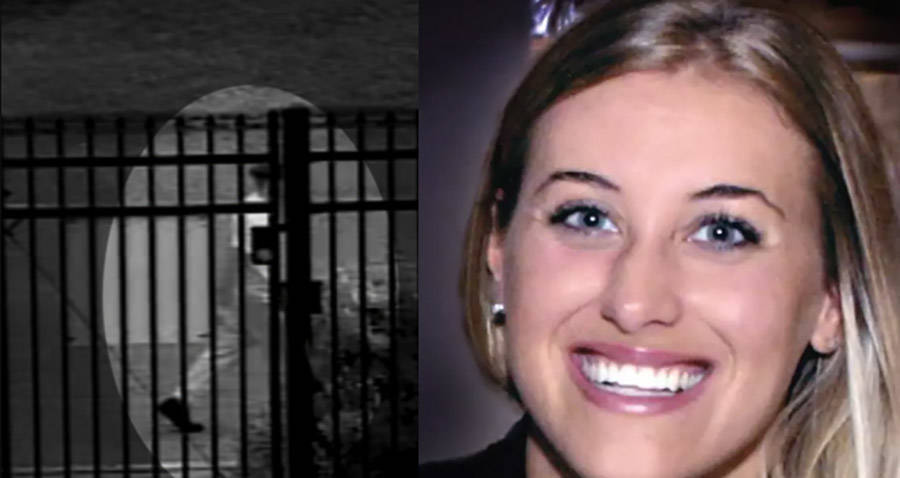
Jennifer Kesse seemed to have everything going for her — a loving family, a devoted boyfriend, and a promising career. But on January 23, 2006, the 24-year-old vanished without a trace, leaving her loved ones in shock and disbelief. Despite a few leads — including security footage of a person of interest and the discovery of her abandoned car — Jennifer’s mysterious disappearance remains unsolved.
The night before she went missing, Jennifer returned home from work, spoke with her family by phone, and called her boyfriend, Robert Allen, around 10 p.m. before going to bed. Everything seemed perfectly normal. But by the next morning, her calls and texts went unanswered. When Jennifer didn’t show up to work, her coworkers grew concerned. By 11 a.m., her parents, Drew and Joyce Kesse, drove from Tampa to her Orlando condo. They found her car gone — but the rest of her home appeared undisturbed.
Later that day, investigators obtained surveillance footage from her apartment complex. It showed an unidentified person parking Jennifer’s black Chevy Malibu around noon — just a few hours after she was last heard from. Frustratingly, the individual’s face was obscured by the apartment gate posts, leaving police and the public with no clear image of the suspect. Reporters dubbed the mystery figure “the luckiest person of interest ever.”
Jennifer’s car was eventually recovered about a mile away, but it provided little insight. Police found a small, partial fingerprint on the vehicle, but it was too faint to be of any use. None of her personal belongings were missing, ruling out robbery as a motive.
Investigators then shifted their focus to people in Jennifer’s life. Her family and boyfriend conducted their own searches, even looking into one of her ex-boyfriends and a coworker who had shown an unusual interest in her. Both men were eventually cleared. Leads dried up, and the case grew cold.
No activity was ever found on Jennifer’s bank accounts, credit cards, or cell phone after that morning. It was as though she had vanished into thin air. Over the years, countless tips and theories have surfaced, but none have brought her home.
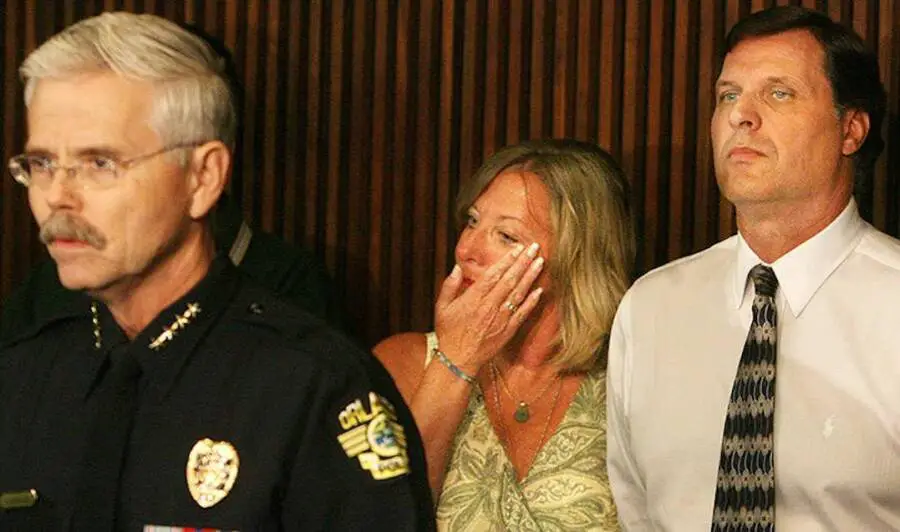
“Imagine waking up and your daughter is nowhere to be found,” said Orlando Police Detective Teresa Sprague. “You can’t reach her, you can’t locate her. The police can’t locate her. Hours turn into panic and days into your worst nightmare. I cannot imagine the nightmare the Kesse family has been sleepwalking through.”
Nearly two decades later, Jennifer Kesse’s disappearance continues to haunt Florida — a chilling mystery that remains one of the most baffling missing person cases in modern history.
The Unsolved Disappearance Of Maura Murray, Who Vanished On A Remote Road
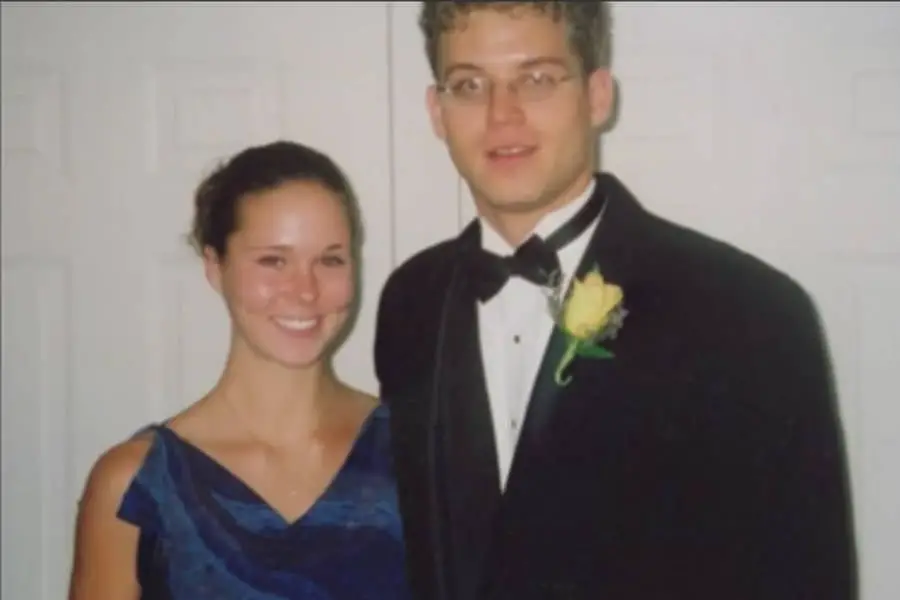
Shortly after 7 p.m. on February 9, 2004, the Grafton County Sheriff’s Department in New Hampshire began receiving reports of a car accident. The first caller reported a black Saturn stuck in a snowbank along a rural road in Woodsville, New Hampshire.
A second call came from local school bus driver Butch Atwood, who told authorities that a young woman was sitting inside the vehicle. She appeared uninjured but noticeably cold and shaken. Atwood recalled that the woman pleaded with him not to contact the police. He agreed and returned home, but later decided to alert authorities anyway. When officers arrived minutes later, the car was still there — but the young woman had vanished. Investigators soon confirmed the vehicle belonged to 21-year-old Maura Murray, a nursing student at the University of Massachusetts Amherst who had recently gone missing.
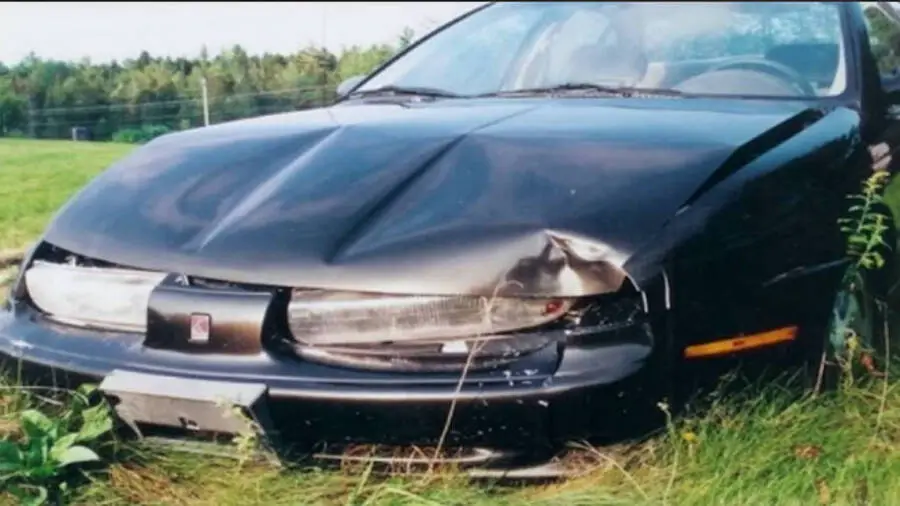
At first, police suspected the case was a tragic accident. It seemed likely Murray had crashed her car while driving intoxicated and wandered into the nearby woods, where she succumbed to the cold. But as the investigation deepened, details began to suggest something far more mysterious.
The last person known to have seen Maura alive before Atwood was her father, Fred Murray. The night before the accident, the two had dinner together, sharing what Fred described as a perfectly normal evening. He lent Maura his car so she could drive back to campus for a party. On her way home around 2:30 a.m., she crashed the car. When she called her father to tell him what happened, he reassured her that everything would be fine and advised her to file a report with the DMV the next day. Fred later said that when Maura returned home that night, she seemed calm and composed.
The next morning, Maura disappeared. On February 9, she emailed her professors, saying she needed to take a week off due to a “death in the family” — a claim that wasn’t true. She then packed belongings from her dorm room, withdrew $280 in cash from an ATM, stopped at the DMV, and bought a significant amount of alcohol. At 4:37 p.m., she checked her voicemail for the last time.
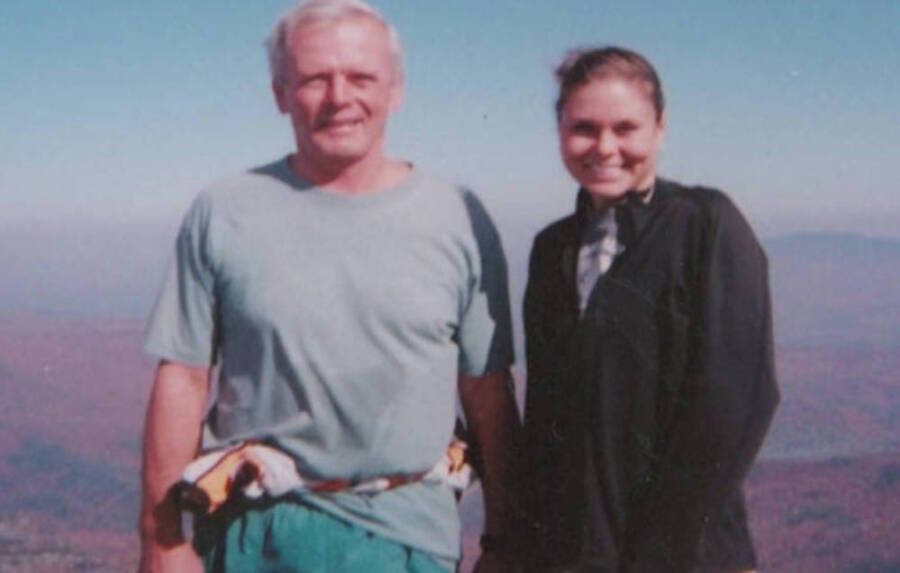
When police found her abandoned car that evening, they also discovered printed directions to a condo complex in Burlington, Vermont, along with phone records indicating she had contacted one of the owners. Back at her dorm, investigators found a note addressed to her boyfriend describing difficulties in their relationship.
Despite numerous theories and occasional reported sightings over the years, Maura Murray has never been found. Her disappearance remains one of New England’s most haunting and enduring mysteries.
Tara Calico’s Unsolved Disappearance — And Reappearance In A Polaroid
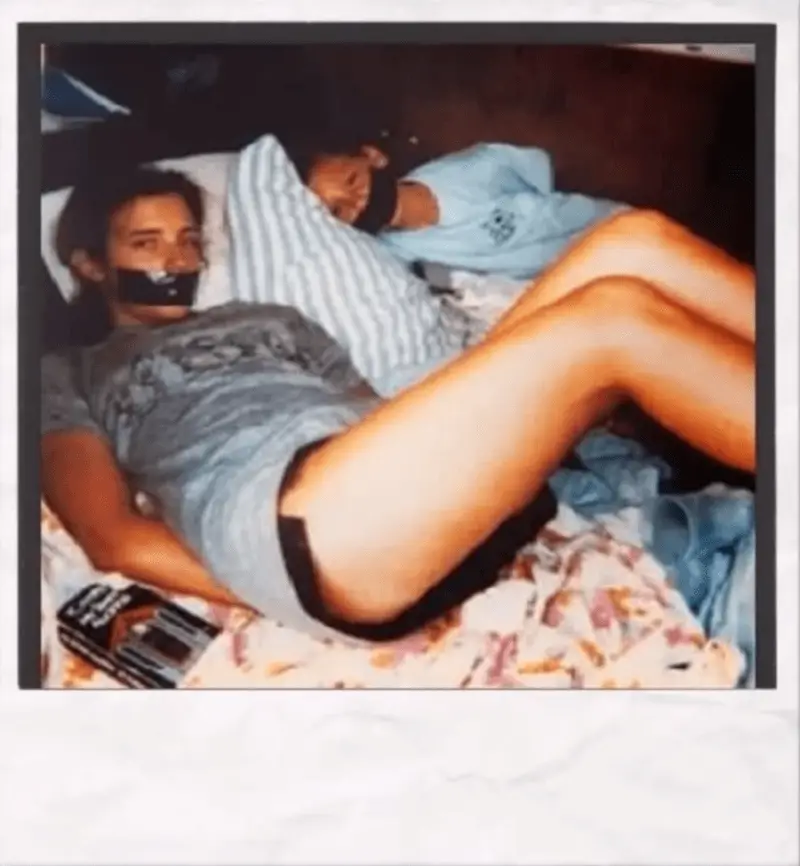
On the morning of September 20, 1988, 19-year-old Tara Calico left her home in Valencia County, New Mexico, for her regular bike ride. It was a routine trip she made almost every day—but this time, she never came back. Her mysterious disappearance would soon become one of the most haunting unsolved cases in American history, especially after a chilling Polaroid photo surfaced a year later that many believe shows Tara bound and gagged.
Before heading out, Tara lightheartedly told her mother, Patty Doel, that if she wasn’t back by noon, she should “come find her.” She had plans to play tennis with her boyfriend at 12:30 p.m. and didn’t want to be late. But when noon passed without any sign of her, Patty became worried and drove Tara’s usual bike route, searching desperately. There was no trace of her daughter. She soon contacted authorities, and search efforts were launched—but they turned up little evidence.
Fragments of Tara’s Walkman and cassette tape were found scattered along the road, leading investigators to believe she may have broken them deliberately to leave a trail. Despite these clues, the case quickly went cold, leaving her devastated family grasping for answers.
Investigators initially explored every angle, even questioning Tara’s parents about her home life. They found no indication of abuse or family issues—only two heartbroken parents longing for their daughter’s return. “There was just so much she wanted to fit into a day,” her father John recalled. “She was like a little machine. It was amazing.”
Then, nearly nine months later, a shocking discovery reignited hope—and fear. On June 15, 1989, a Polaroid photograph was found in a convenience store parking lot in Port St. Joe, Florida—1,500 miles from where Tara vanished. It showed a teenage girl and a young boy lying on a bed, bound and gagged with duct tape. The girl’s resemblance to Tara was striking, right down to a scar on her thigh identical to Tara’s.
Patty Doel was convinced it was her daughter. While the FBI expressed skepticism, experts from Scotland Yard in the United Kingdom supported Patty’s belief. The case took another strange turn when a family identified the boy in the photo as their missing son, Michael Henley, who had disappeared while camping in New Mexico. But in 1990, his remains were found in the Zuni Mountains, and it appeared he had died of exposure—not abduction.
In 2008, Valencia County Sheriff Rene Rivera claimed he had received information that Tara was struck by a vehicle while biking and killed. Fearing the consequences, the teenage driver and friends allegedly hid her body. Yet no arrests were made, and no physical evidence supported the claim.
Tara’s parents eventually moved to Florida, hoping to escape the pain of unanswered questions. But for them—and countless others—Tara Calico’s story remains a haunting mystery. Despite decades of theories, sightings, and speculation, Tara has never been found.
The Unsolved Disappearance Of Pilot Frederick Valentich While Mid-Flight
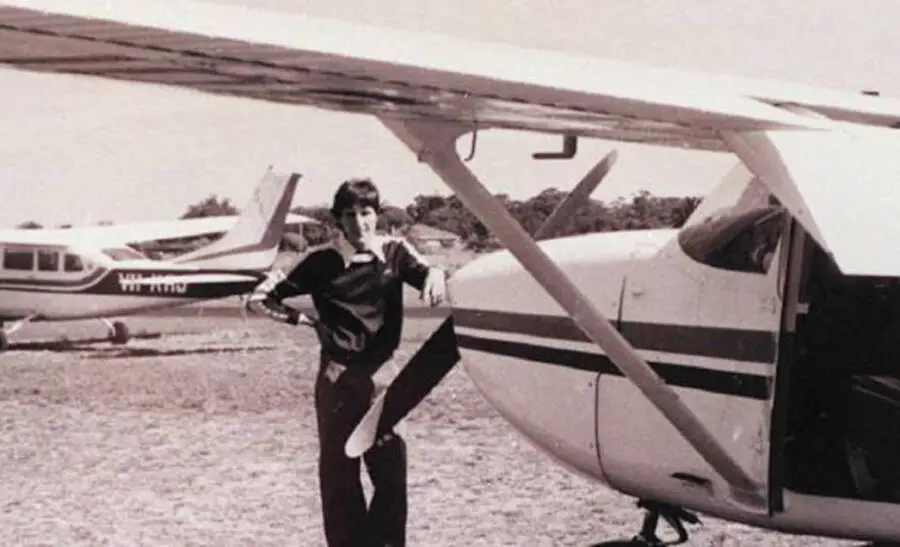
On October 21, 1978, 20-year-old Frederick Valentich vanished while conducting a routine training flight over the Bass Strait between mainland Australia and Tasmania. An experienced pilot with roughly 150 hours of flight time, Valentich was operating a Cessna 182L when he mysteriously disappeared without a trace.
Shortly after departing Moorabbin Airport for King Island, Valentich contacted Melbourne Flight Service with a chilling report — an unidentified aircraft appeared to be following him at 4,500 feet. He described it as fast-moving, with four bright landing lights, and claimed it had flown about 1,000 feet above his position.
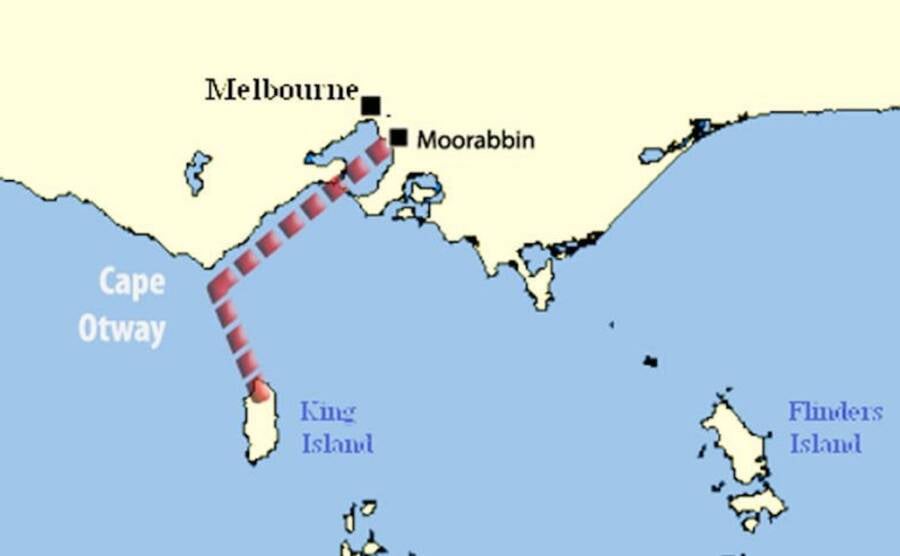
Over the next five minutes, Valentich continued to describe the object’s strange maneuvers, suggesting that whoever was flying it seemed to be “toying” with him. He said the craft had a shiny metallic surface and emitted a green light.
Then, Valentich reported engine trouble. When air traffic controllers asked him to describe the mysterious craft one last time, he uttered a haunting final statement: “It isn’t an aircraft.” The transmission abruptly ended with a metallic scraping sound — and silence.
Authorities assumed he had crashed, but extensive air and sea searches failed to uncover any trace of his plane. Five years later, however, an engine cowl flap — confirmed to match Valentich’s Cessna — washed ashore on Flinders Island.
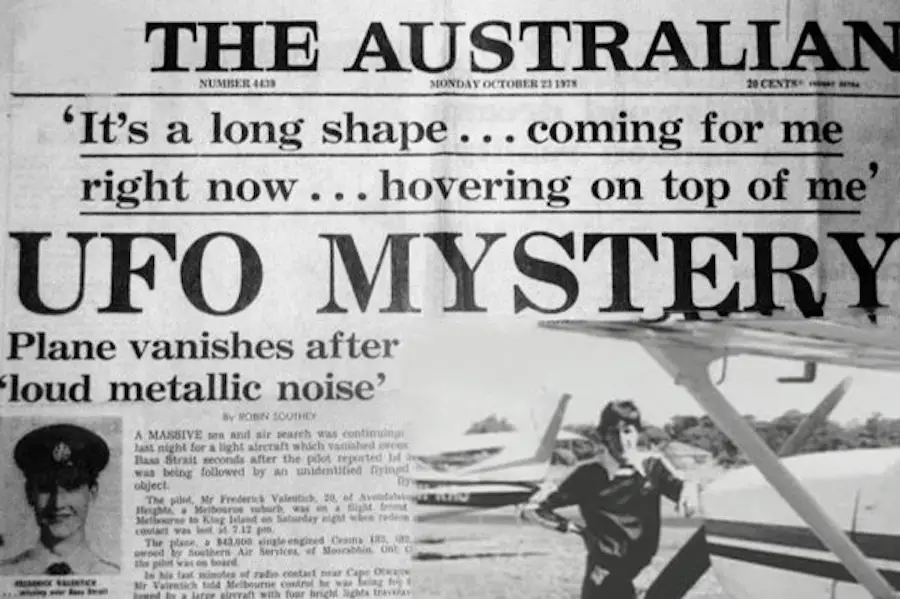
Adding to the mystery, Valentich’s father later revealed that his son had been a devoted believer in UFOs and often expressed concern about encountering one in flight. In 2014, a UFO Action group in Victoria claimed that a farmer had witnessed a 90-foot craft hovering above his property on the same morning Valentich disappeared — with what appeared to be a small plane attached to its side.
The farmer never came forward publicly, and no further evidence has surfaced. To this day, Frederick Valentich’s disappearance remains one of aviation’s most baffling unsolved mysteries.
The Mysterious Disappearance Of Two High School Students And Their Mother

This case remains one of the most haunting missing persons mysteries in American history — the disappearance of three women who vanished without a trace.
On June 7, 1992, 19-year-old Suzi Streeter, her 47-year-old mother Sherill Levitt, and 18-year-old Stacy McCall were reported missing from their Springfield, Missouri home. The night before, Streeter and McCall had been celebrating their high school graduation. Those joyous festivities would be the last time anyone in Webster County saw the two young women or Sherill alive.
“I expected her home that night, the next day, maybe a couple of days afterward,” recalled Janis McCall, Stacy’s mother, in a 2017 interview. “Never in my wildest imagination did I think that 25 years later, I’d still be saying Stacy is missing.”
Investigations led by the Missouri State Highway Patrol, Springfield Police Department, and even the FBI produced no solid leads. A 40-acre search in 1993 came up empty. In 1996, a sliver of hope appeared when convicted murderer Robert Craig Cox claimed in a prison interview that he had been in Springfield the day the women disappeared — yet no evidence ever connected him to the case.
In 2002, two women reported suspicious activity at a concrete company in Webster County. Authorities searched the site and discovered human bones, but tests revealed they were too old to belong to the missing trio. The following year, investigators found traces of blood at a farm in Cassville, but once again, forensic testing ruled out any connection to the Springfield Three.
Today, more than three decades later, the mystery endures. While law enforcement has long since closed the official case, Janis McCall continues her tireless search for answers.

“Until I know a hundred percent that Stacy is deceased, I will never declare her dead,” she said firmly. “They’re going to have to find some remains somewhere before I call her legally dead. It’s not for any reason other than — if I do, and she’s not dead — think how mad she’d be when she gets back.”
The Baffling Missing Persons Case Of Branson Perry That Implicated A Cannibalistic Minister

Branson Perry vanished without a trace from his father’s home in Skidmore, Missouri, on April 11, 2001. The 20-year-old wasn’t alone that day his friend, Jena Crawford, had stopped by to help him clean before his father’s return from the hospital.
Crawford later told investigators that Perry had stepped outside, calling up to her through the window that he was taking some jumper cables back to the shed. Two men working nearby on his father’s car also saw him yet, moments later, Branson was gone.A graduate of Nodaway-Holt High School, Perry had been working with a traveling petting zoo and was living with his father while managing tachycardia, a heart condition that caused a rapid heartbeat.
Just days before his disappearance, on April 7, Perry had visited his neighbor, Jason Biermann, who allegedly gave him an unknown drug. True-crime author Diane Fanning later wrote that Perry, under the influence, stripped naked, danced, shaved his pubic hair, and engaged in sexual activity with Biermann.

When he sobered up, Branson was humiliated and confessed everything to his father, who was furious though no confrontation ever took place. Biermann was never officially listed as a suspect in Perry’s disappearance.
On the day Branson vanished, Crawford assumed he had gone somewhere else and left without concern. The next day, Perry’s grandmother stopped by the house but found it empty. When the home was still vacant the following day, she and Branson’s parents filed a missing person’s report on April 16. All of his personal belongings remained inside, and police quickly suspected foul play.
The case took a shocking turn in 2003 when authorities arrested Jack Wayne Rogers, a Presbyterian minister and Boy Scout leader, on unrelated charges. Rogers had attempted to perform sex reassignment surgery on a transgender woman, who nearly bled to death. When police searched his property, they uncovered horrifying materials child pornography and online writings graphically describing the rape, torture, and murder of men.
One of Rogers’ online posts described killing a blond hitchhiker and burying him in the Ozarks — details eerily similar to Perry’s case. However, Rogers insisted his writings were fictional, and investigators could not link him to Branson’s disappearance.
“In my heart, I don’t believe this suspect is responsible,” Branson’s mother, Rebecca Klino, later said.
Despite extensive searches and numerous theories, no trace of Branson Perry has ever been found. Investigators believe he was murdered, but whether his death is connected to local drug activity or something far more sinister remains a haunting mystery. More than two decades later, Branson Perry is still listed as missing.
The Unsolved Disappearance Of The Jamison Family From Their Own Home
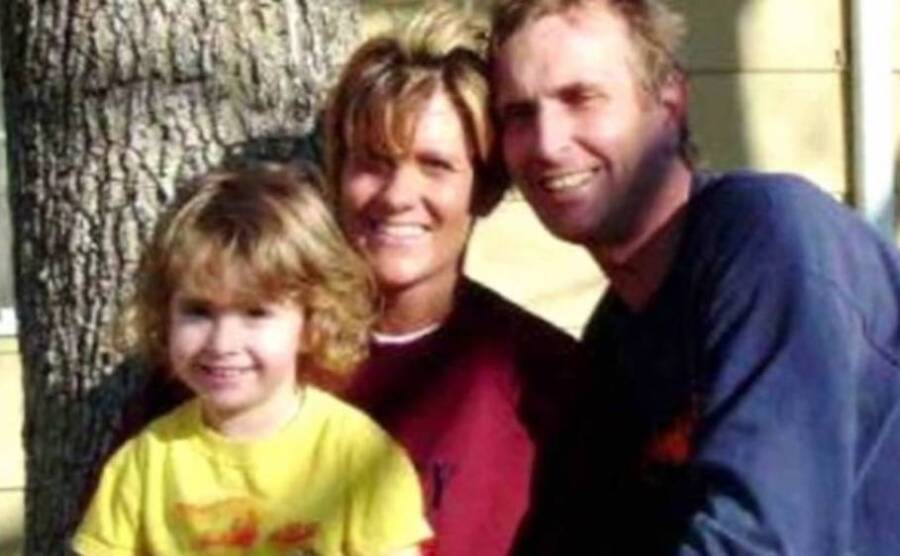
Shortly before the Jamison family vanished in 2009, 44-year-old Bobby Dale Jamison confided in his pastor that their Eufaula, Oklahoma home was haunted. He claimed that “two to four ghosts” lived on the roof and tormented his family. Days later, Bobby, his wife Sherilynn, and their six-year-old daughter Madyson mysteriously disappeared.
The family was reported missing on October 8, 2009. A few days later, police found their pickup truck abandoned in Latimer County, about an hour from their home. Inside were their wallets, phones, IDs, the family’s dog, and $32,000 in cash. The discovery only deepened the mystery. Both Bobby and Sherilynn were unemployed and living on disability checks, leading investigators to wonder how they’d come across such a large sum of money. Some speculated that the family was involved in a drug deal gone wrong — but if that were true, why bring their daughter and dog?
Everything found in the vehicle suggested the Jamisons hadn’t planned to be gone long. For years, the case went cold. Then, in November 2013, hunters discovered the skeletal remains of two adults and one child about three miles from where the truck had been found. Forensic experts identified them as the Jamison family, but the cause of death couldn’t be determined.
When investigators revisited the case, they reviewed eerie security footage from the Jamisons’ home showing Bobby and Sherilynn methodically packing up belongings and loading them into their truck the night they vanished. Sherilynn’s mother later claimed that the couple had fallen in with a cult, and police also found that she had purchased a Satanic Bible — though it’s unclear if this had any real significance.
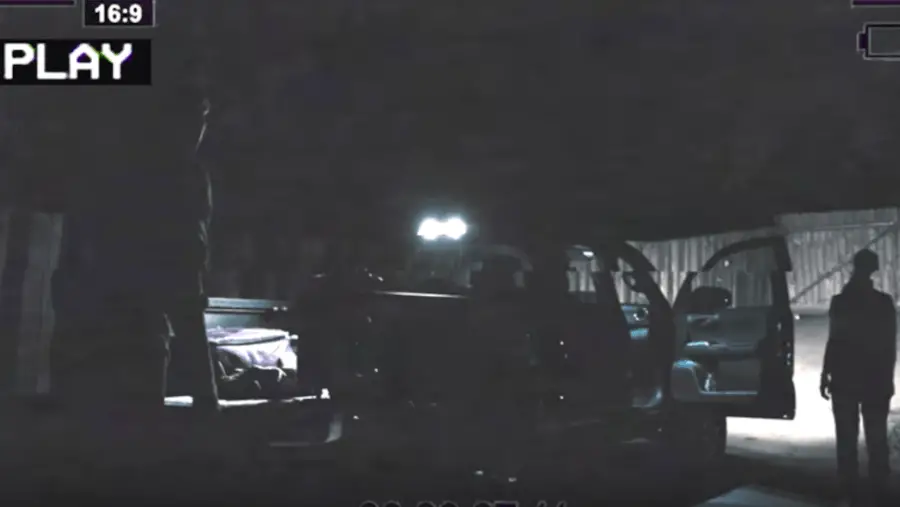
Another theory pointed to Bobby’s father, whom he’d recently filed a protective order against, describing him as “a very dangerous man who thinks he is above the law.” Still, the most widely discussed possibility was that Bobby killed his wife and daughter before taking his own life. Police found an 11-page angry letter Sherilynn had written to Bobby, suggesting turmoil in their marriage.
Despite numerous theories, the Jamison family’s deaths remain unsolved. The combination of paranormal fears, family conflict, and unexplained evidence has turned their disappearance into one of Oklahoma’s most haunting mysteries.
The Missing Person Case Of Teamster Jimmy Hoffa
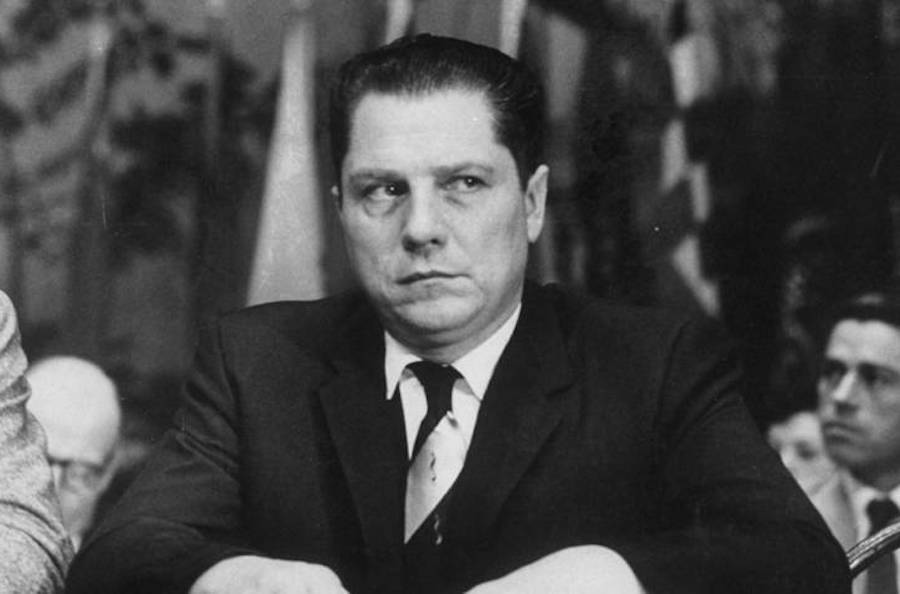
As the former leader of the powerful yet notoriously corrupt Teamsters Union, Jimmy Hoffa was a household name long before his mysterious disappearance in 1975. His high profile made his case one of the most famous vanishings in American history, sparking countless theories about what truly happened to him.
Martin Scorsese’s The Irishman popularized the most compelling theory — that Hoffa crossed the wrong people in the mob and paid for it with his life.
Hoffa’s rise began in 1932 when he joined the Teamsters as an organizer. Ambitious and shrewd, he quickly climbed the ranks, forging influential but dangerous ties with organized crime figures. These connections helped him transform the Teamsters into the most powerful labor union in the United States. But by the 1970s, the interests of the mob and the union began to clash, creating dangerous tensions.
On July 30, 1975, Hoffa vanished without a trace. He was last seen in the parking lot of the Machus Red Fox restaurant in Bloomfield Township, Michigan, where he was supposed to meet several mobsters amid growing disputes between the Teamsters and organized crime. What was meant to be a meeting was likely an ambush. Hoffa was officially declared dead in 1982, but his body was never found, and the case remains open to this day.
One theory suggests Hoffa was murdered by New York hitman John Sullivan, who allegedly dismembered the body with a meat cleaver and saw, storing the remains in a freezer before hiding them in the concrete foundations of New Jersey’s then-under-construction Giants Stadium.
Still, the account presented in The Irishman remains the most widely accepted. Frank Sheeran, Hoffa’s close friend and longtime associate, confessed before his death that he killed Hoffa on the orders of Pennsylvania mob boss Russell Bufalino, possibly in coordination with Angelo Bruno.
Decades later, the disappearance of Jimmy Hoffa continues to captivate the public, spawning endless speculation, conspiracy theories, and new leads that keep his legend alive.
The Unsolved Disappearance Of Amy Lynn Bradley From A Cruise Ship
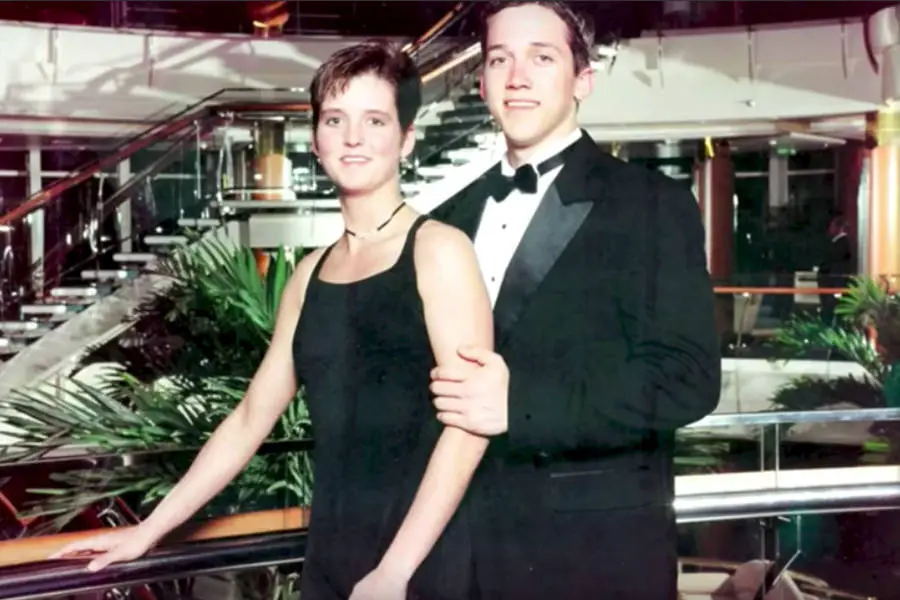
It was the early morning of March 24, 1998, when Amy Lynn Bradley’s father last saw her alive. Around 5:30 a.m., he noticed his daughter peacefully asleep on the balcony of their cruise ship cabin aboard the Rhapsody of the Seas. Having spent most of the previous night dancing at the ship’s nightclub, Amy seemed exhausted. Her father decided to let her rest. But when he returned just 30 minutes later, she was gone — without a trace.
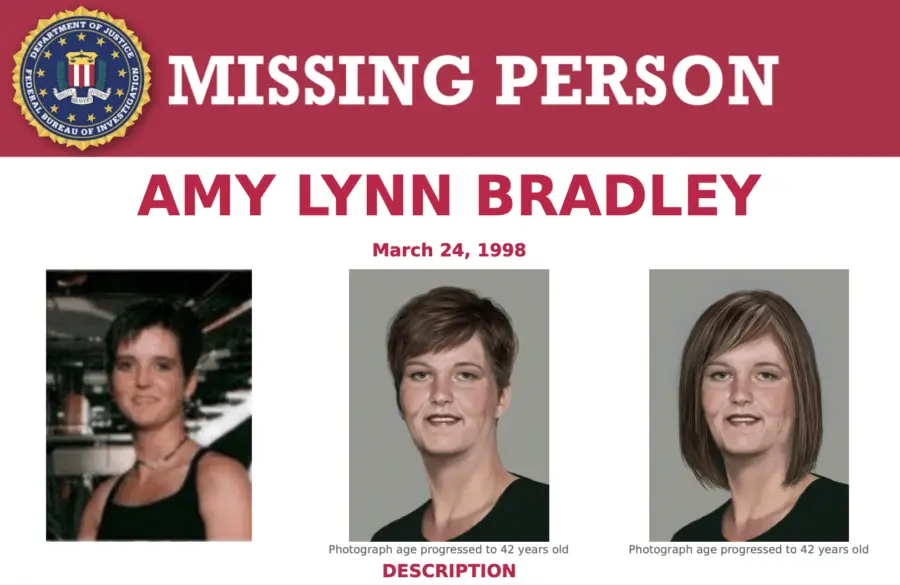
The Bradleys had boarded the Rhapsody of the Seas four days earlier for a family vacation through the Caribbean. The trip had been calm and enjoyable as the ship made its way toward Curaçao. On the night before her disappearance, Amy and her brother, Brad, joined other passengers at the nightclub to celebrate. Brad later said that Amy stayed behind to chat with one of the band members performing that night. He left around 1 a.m., never imagining it would be the last time he’d see his sister.
When Amy didn’t return to their cabin, her family immediately raised the alarm. But ship officials were slow to respond. Despite the urgency, the crew refused to stop the ship or make a public announcement over the P.A. system. By the time they began searching after docking in Curaçao, Amy had vanished.
The family soon began to suspect foul play. Amy was a certified lifeguard and a strong swimmer, making it unlikely she accidentally fell overboard. Brad also recalled how several male crew members had been giving Amy “special attention” the night before — fueling fears that she may have been abducted or trafficked.
Over the following years, several potential sightings deepened the mystery. In August 1998, witnesses in Curaçao reported seeing a woman matching Amy’s description, complete with identical tattoos. In 1999, a U.S. Navy officer visiting a local brothel claimed that one of the women there told him her name was Amy Bradley and that she wasn’t allowed to leave.
Perhaps the most disturbing development came in 2005, when the Bradley family received an anonymous email containing a photo of a woman who strongly resembled Amy — lying on a bed in her underwear, looking frightened.

Despite countless investigations, tips, and renewed public interest, Amy Lynn Bradley’s disappearance remains one of the most haunting unsolved mysteries in modern history.